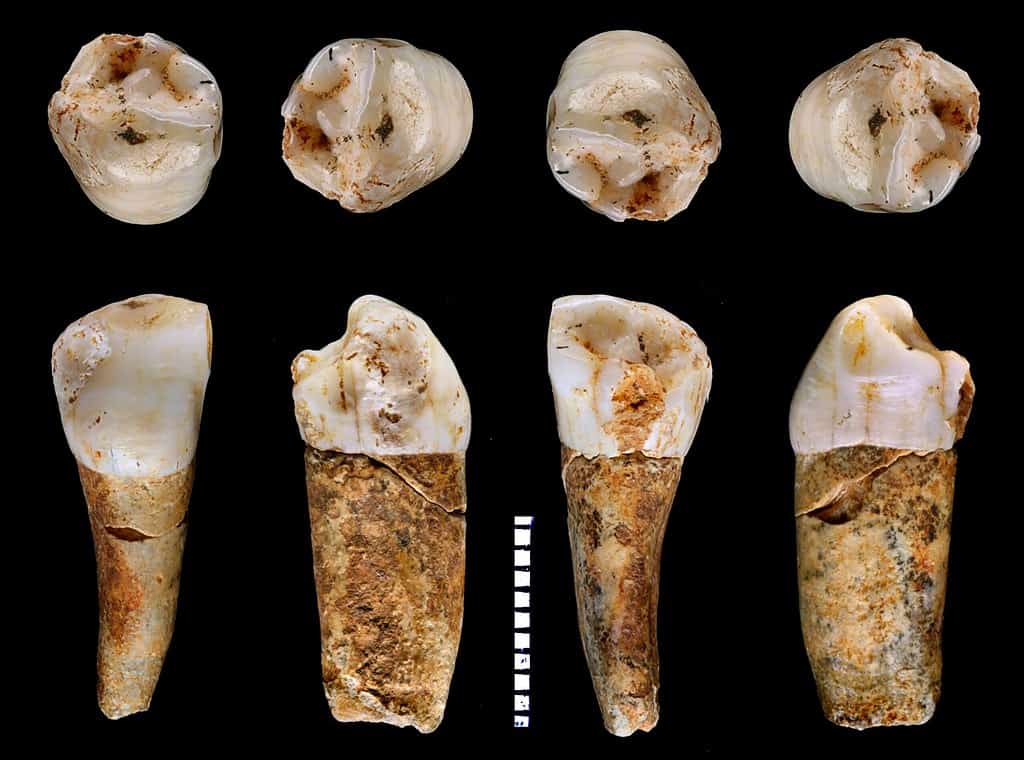A team of researchers has shed light on the dietary habits and hunting practices of Neanderthals and other prehistoric humans who inhabited Western Europe nearly a century ago. The team analyzed chemical properties preserved in tooth enamel. With this, they were able to reconstruct some of the hunting habits and diets of early humans living in central Portugal.

Neanderthals, an ancient human species, inhabited Eurasia from approximately 400,000 to 40,000 years ago. They were closely related to Homo sapiens, the modern human species, with DNA evidence indicating a shared ancestry between the two. In fact, studies have shown that they interbred during their coexistence. Billions of people on Earth have Neanderthal DNA.
The study was performed by an international team led by the University of Southampton. It showed that Neanderthals living around the Almonda Cave system hunted mainly large animals across wide tracts of land. Meanwhile, humans inhabiting the same area thousands of years later relied on smaller creatures within a territory half the size.
João Zilhão, co-author of the study, said the difference in the territory was probably related to population density. With a low population, Neanderthals could roam further to target large prey species such as horses without encountering rival groups. This wasn’t the case with humans, who occupied a smaller territory and hunted rabbits.
The intriguing Neanderthals
We now know that Neanderthals were not the brutes we once considered them. They were smart, social, and just as capable as modern humans. But finding evidence about their lifestyle is often challenging. That’s why researchers sometimes rely on chemical tricks.
Over millions of years, radioactive processes cause gradual changes in the strontium isotopes found in rocks. This means they vary from place to place depending on the age of the geological formations. As rocks erode, the isotopes are sent to plants via sedimentation and eventually enter the food chain, ending up in tooth enamel.
In the study, the researchers used a laser to extract enamel samples and did individual measurements of strontium isotopes along the growth trajectory of tooth crowns. The samples were from two Neanderthals dating back approximately 95,000 years, as well as a more recent human who lived around 13,000 years ago during a period called the Magdalenian.
Additionally, the researcher examined isotopes present in the tooth enamel of animals. Alongside strontium, they looked for seasonal variations in oxygen isotopes, which transition between summer and winter conditions. This enabled them to determine
not only the animals’ spatial distribution but also the seasons when they were available.
The findings revealed that Neanderthals, who targeted large animals, likely hunted wild goats during the summer season. They also hunted horses, red deer, and an extinct species of rhinoceros which were available year-round within a radius of approximately 30 km from the cave. In contrast, humans moved within a 20 km, radius and hunted rabbits, deer, and goats.
By estimating the territorial ranges of these two distinct human groups, the research team uncovered significant differences between them. Neanderthals acquired their food over an estimated area of approximately 600 square km, whereas the Magdalenian individuals occupied a significantly smaller territory of about 300 square km.
“Previously, the lives and behaviours of past individuals was limited to what we could infer from marks on their bones or the artefacts they used. Now, using the chemistry of bones and teeth, we can begin to reconstruct individual life histories, even as far back as the Neanderthals,” co-author Alistair Pike of the University of Southampton, said in a statement.
The study was published in the journal PNAS.


